3 Peaks Yacht Race Report
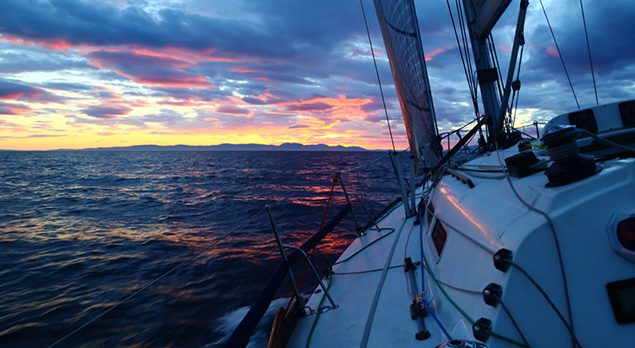
You'd be forgiven if you questioned the logic of a man who had pitted himself against the gauntlet of the UK's 3 Peaks Challenge while cycling the distance between each mountain. But to repeat that feat 2 years later AND incorporate sailing into the mix? The idea alone would have most people running for the hills, to coin a phrase. But EB adventure racer Ali has done just that...
Hi Ali, could you explain to us how the 3 Peaks Yacht Race came about?
When I say I am doing the '3 Peaks Yacht Race' people look quizzically at me – 'how does going up the highest mountains in Wales, England and Scotland involve a yacht?!'
First run in 1977, it is held in memory of sailor and mountaineer Bill Tilman. This race is an adventure like no other I have experienced – and one of the best.
The race starts in Barmouth, home to Bill Tilman's yacht club and Rob Haworth, his doctor, who devised the idea of a yacht race between these mountains. Teams of five then sail around the Llŷnn Penninsula to Caenarfon for the run up Snowdon. Use of engines in the race is banned and so the sail through the infamous Menai Straits can be rollercoaster journey that has ended the race of a number of crews over the years. It is then out across the Irish Sea to reach Whitehaven, for the Scafell ascent before skirting the Mulls of Galway and Kintyre before heading into Loch Linnhe to reach Fort William and Ben Nevis. In total this means 400 miles of sailing and 80 miles of running and cycling.
How did you get involved in the 3 Peaks Yacht Race?
The concept of racing a long journey is what draws me to adventure racing and so after completing my own 3 peaks two years ago (cycling between the summits) I'd had my eye on getting an entry for this race. The only problem was I'd never sailed!
Through the website I managed to find a crew who were looking for a runner. Over the email discussions it became apparent that they shared the same competitive streak as I have. However this just made me more nervous – I'd been in a sailing boat twice in my life (once without any wind) so how was I going to cope with sea sickness never mind the technical part of sailing?
As the race approached I managed to meet with John, the boat's owner, and have a day out in the Solent. Although the sailing was fine, I felt I was hearing a foreign language – sheets, jibs, tacks, et cetera.
How did the first section go for you?
As we sailed out of Barmouth Harbour it felt like the whole town was out – the cheers and pounding of a drumming group on the harbour wall raising our spirits. The flare goes up and we are off. Normally on a running or cycling race there is controlled chaos as we jostle for position and adrenaline runs. However, on this day the complete lack of wind meant that we were in a slow motion race with most yachts moving about 1-2 knots – some took to their oars to gain an advantage.
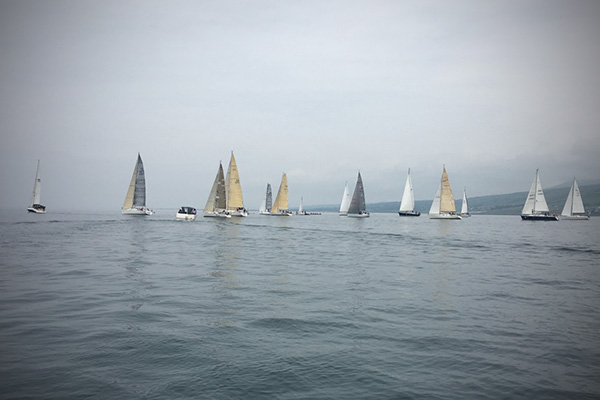
With patches of breeze we made our way slowly across the bay to Bardsey Point to turn north east to Caernarfon. As runners we relaxed, took in the sun and even saw a couple of whales or porpoises. It was 1am when we were woken to start our run to Snowdon and back, covering 24 miles with dawn arriving on the summit.
Back on the boat we expected time to rest but once again were becalmed. The treacherous Menai Straits were a millpond. I never thought I would ever row through the Straits and the 'Swellies' - never mind in a 5 ton yacht.
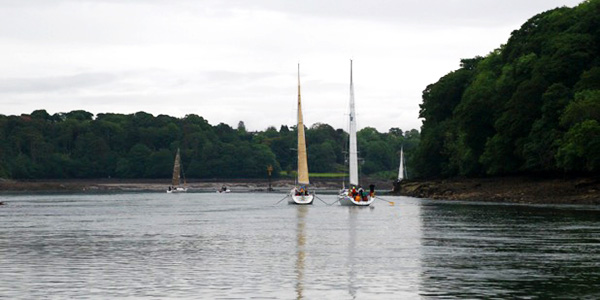
Again patchy wind gave some progress across the Irish Sea towards St. Bees Head. At Whitehaven there is a sea-lock into the harbour which is inaccessible for a few hours either side of low tide. Getting the timing wrong could mean anchoring outside and losing 4-6 hours of race time.
I've kayaked around St. Bees but once again we took to the oars to try to beat the tide and get into the harbour. Once crossing the harbour entrance the engine can be used but we knew we were close. Up on deck, getting ready to depart, the skipper suddenly shouted 'Brace!, Brace!' and we all dropped and held on as the keel scraped the seabed. Giving the engine full throttle we shot into the sea-lock with moments to spare – no other boats were going to get in for another 4 hours.
The first 15 miles are on bike up to Black Sail Youth Hostel and at this point the heavens opened. From there it is a run over a pass to Wasdale Head and the climb up Scafell Pike before returning the same way. After about 8 hours we were back on board and made it out of the harbour before the next 'lock out / in'.
Did the conditions stay calm?
Overnight we were back to rowing with the lights of the Galway Peninsula in the distance. Watching a band of cloud approach suddenly the wind went from 0 to 15 knots and in a moment the whole crew was on deck downsizing the sails in the pitch black, crashing through the waves before the wind blew the boat over or tore the larger sails.
Around the Mull of Galway and across to the Mull of Kintyre all was looking good with reasonable winds. We knew there was a strong tidal race around Kintyre but thought we'd squeeze through. As we passed the lighthouse the wind vanished again. So back on the oars, however this was just slowing our backwards travel with a 3 knot tide. Rowing while watching the cliffs go the wrong way we were eventually spat back out in to the open sea.
A plan was made to try to anchor but was too dangerous so we managed to tack close to cliffs in the less fast water. We made painfully slow progress which amused the seals watching on. After four hours the tide slowed and the wind returned and we were moving forward once again.
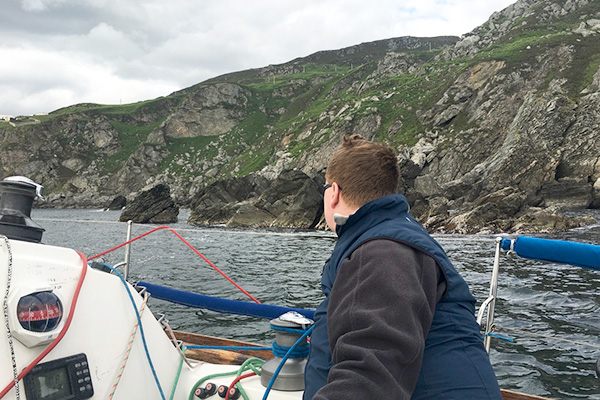
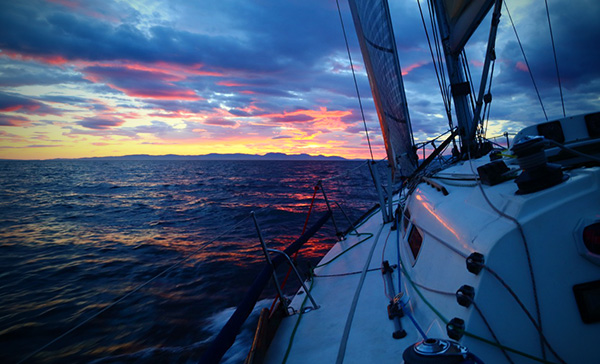
After a stunning sunset over Islay I went to bed to wake to the boat leaning hard over and crashing through waves. A strong headwind had blown up and we were tacking hard against it, downsizing the sails and everyone hanging on. Below deck I was flung from side to side every 30 minutes as the boat tacked and went from one 45 degree lean to another. This was exciting sailing. One team counted 71 tacks to get them up Loch Linnhe and into Fort William.
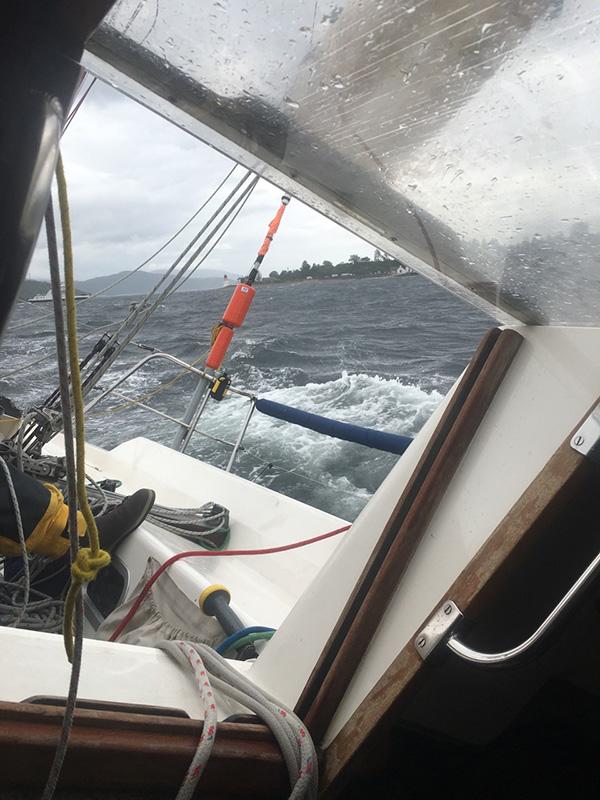
How was the final push over Ben Nevis?
It was a final shorter run (14 miles) up and down the Ben to reach the finish line. We topped out in the light returning in the dark to cross the line in 4th place, taking 4 days 9 hours and 33 minutes in one of the slowest races due to the (lack of) wind conditions!
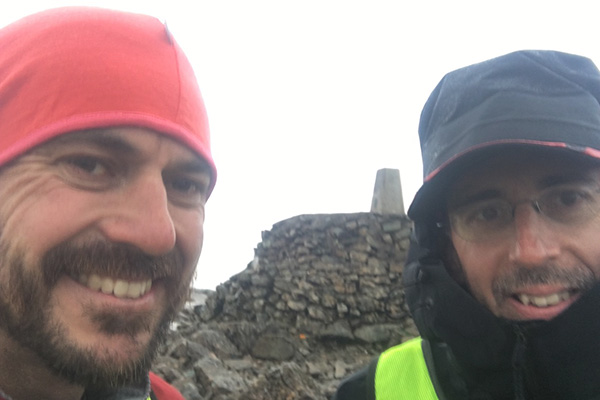
Would you do it again?
Will I do it again – definitely! Next year is the 40th anniversary so if you are interested get on the website and find a boat looking for a runner! www.threepeaksyachtrace.co.uk
![]()
|
|
About the Author:Mike Humphreys - Online ContentMike is a keen cyclist, snowboarder, hill walker and Land Rover tinkerer. He has travelled extensively, spending a year living out of a van in New Zealand before joining Ellis Brigham four years ago. Can usually be found walking his dogs or tortoises. |






